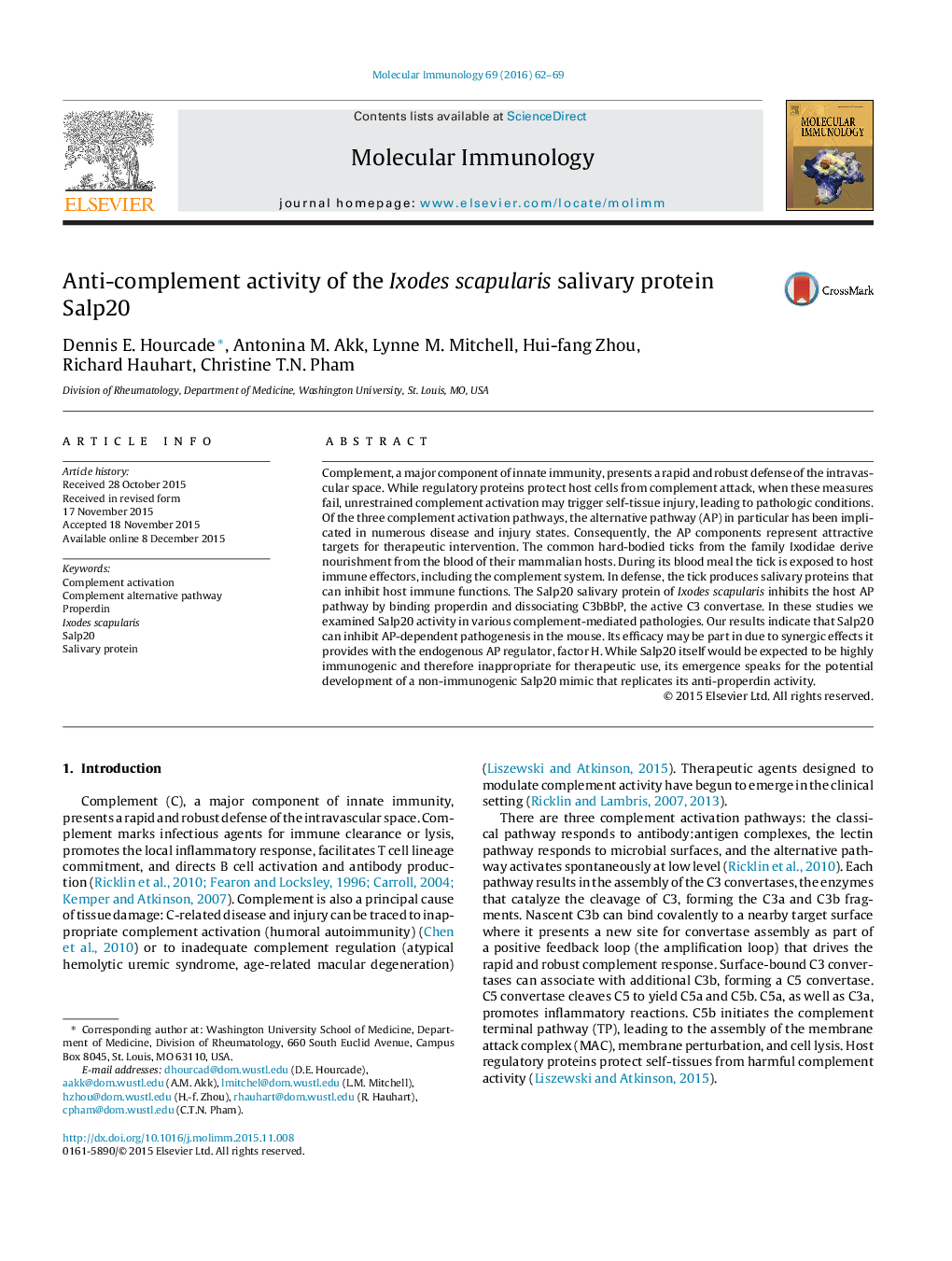| کد مقاله | کد نشریه | سال انتشار | مقاله انگلیسی | نسخه تمام متن |
|---|---|---|---|---|
| 2830604 | 1570724 | 2016 | 8 صفحه PDF | دانلود رایگان |

• Salp20, a salivary protein of the common deer tick Ixodes scapularis, inhibits complement alternative pathway dependent pathogenesis in mouse disease models.
• Salp20 efficacy may be in part due to synergistic effects it provides with the host complement regulatory protein factor H.
• A non-immunogenic Salp20 mimic that replicates its anti-properdin activity could be a valuable therapeutic agent.
Complement, a major component of innate immunity, presents a rapid and robust defense of the intravascular space. While regulatory proteins protect host cells from complement attack, when these measures fail, unrestrained complement activation may trigger self-tissue injury, leading to pathologic conditions. Of the three complement activation pathways, the alternative pathway (AP) in particular has been implicated in numerous disease and injury states. Consequently, the AP components represent attractive targets for therapeutic intervention. The common hard-bodied ticks from the family Ixodidae derive nourishment from the blood of their mammalian hosts. During its blood meal the tick is exposed to host immune effectors, including the complement system. In defense, the tick produces salivary proteins that can inhibit host immune functions. The Salp20 salivary protein of Ixodes scapularis inhibits the host AP pathway by binding properdin and dissociating C3bBbP, the active C3 convertase. In these studies we examined Salp20 activity in various complement-mediated pathologies. Our results indicate that Salp20 can inhibit AP-dependent pathogenesis in the mouse. Its efficacy may be part in due to synergic effects it provides with the endogenous AP regulator, factor H. While Salp20 itself would be expected to be highly immunogenic and therefore inappropriate for therapeutic use, its emergence speaks for the potential development of a non-immunogenic Salp20 mimic that replicates its anti-properdin activity.
Journal: Molecular Immunology - Volume 69, January 2016, Pages 62–69